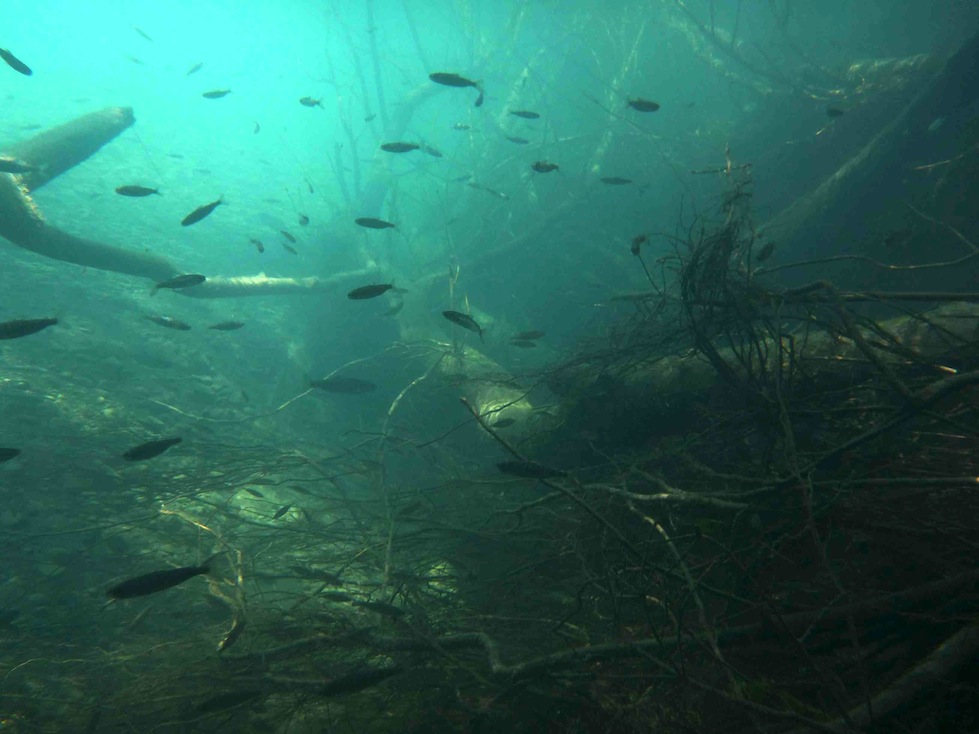Return of the Kings!

Many Mattole watershed residents know that spending some time at the right spot on the river in the fall and early winter can yield sightings of Chinook (also called King) salmon as long as your leg. They’ll be swimming lazy circles in deep pools waiting for the next storm to move upriver; or on the spawning grounds, females working their tails literally to the bone to move grapefruit sized stones to ready the streambed for their eggs, while the males, all spots and scales and teeth and leering eyes and blind aggression are chasing each other about for the chance to fertilize those eggs.
Less well appreciated is that much of the Mattole River is also alive with Chinook in the spring. These fish, the progeny of the single-minded adults from the winter before, are much less conspicuous than their forebears, since they are only a few inches long. But they are much more numerous, with literally hundreds of thousands of them headed out to sea every spring.
MSG staff have been conducting regular dives in a river reach downstream from Petrolia beginning in April of this year, in part to monitor juvenile salmon and steelhead use of recent restoration projects. We’ve seen large numbers of juvenile Chinook, literally thousands, in just a short stretch of river (a few pools).
While this is just a snapshot of conditions in a small portion of the watershed, these observations seem to suggest that spawning incubation, and fry emergence from the relatively strong Chinook run from the winter of 2014-15 was fairly successful. We would expect this to be so, given that December rains allowed the bulk of the Chinook run to move upstream into tributaries and the mainstem in the upper portion of the watershed, reaches with generally more favorable spawning conditions than the lower river, and the subsequent mild flows and lack of large storms probably led to high rates of survival of eggs and fry.
Juvenile Chinook have a strong preference for areas with woody cover (such as willows or alders dragging in or fallen into the water) and relatively low velocity adjacent to higher velocity areas suitable for drift-feeding. Juveniles are concentrated in these spots, and generally absent elsewhere – although in the last couple weeks, we’ve seen more Chinook out away from cover feeding in riffles and more open water, presumably due to the combination of declining flows leading to more areas with suitable lower velocities, and larger fish with increasing ability to hold in faster water and less of a cover preference as they grow.
Another pleasant surprise on dives in late April and early May were observations of numerous coho smolts. Seeing a coho salmon smolt in the lower Mattole River feels a bit like finding the proverbial needle in a large and dimly lit haystack. Seeing a dozen in one pool is better!
For the sake of all these fish, hopefully temperatures remain mild, we get some more early summer rain, and all of us Mattole bipeds do our part to conserve water and keep more in the river.
